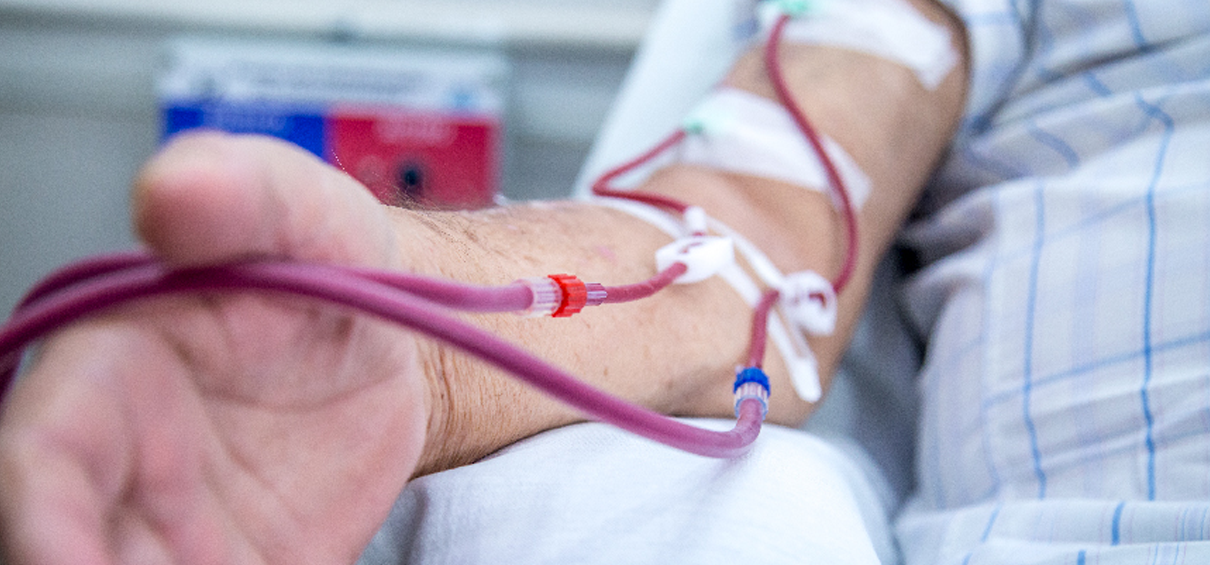When an end-stage renal failure occurs (i.e, when the kidney function is irreversibly reduced to below 15% of normal), there are two treatment options: dialysis or a kidney transplant (also known as a renal transplant). There are two types of dialysis: haemodialysis and peritoneal dialysis. This page deals with haemodialysis.The word ‘haemo’ refers to blood. Haemodialysis is a process that balances blood chemistry and filters wastes and fluid from the blood.For haemodialysis, two needles are inserted into the patient’s arm. One needle withdraws the blood and the other returns the filtered blood to the patient’s body.
The blood, which is withdrawn by the first needle, travels outside the body through the tubing and the dialysis machine then pumps this blood through a filter called a dialyzer, which is attached to the dialysis machine. The dialyzer cleans the blood and it is returned to the patient’s body through the other needle.The dialyzer is also called an artificial kidney because it is an artificial replacement for the patient’s damaged kidneys. During the process of haemodialysis, the haemodialysis machine circulates the dialysate (fluid with chemicals that helps to remove wastes from the body) to the artificial kidney. Haemodialysis is typically performed at a dialysis center.
Rhythm Heart Institutes Nephrology department is well equipped with a dialysis unit providing individualized dialysis for patients with kidney failure. We have 8 state-of-the-art machines. State-of-the-art reverse osmosis plant purifies the water used for haemodialysis. Periodic cultures of the reverse osmosis water are performed to ensure good quality of water.
